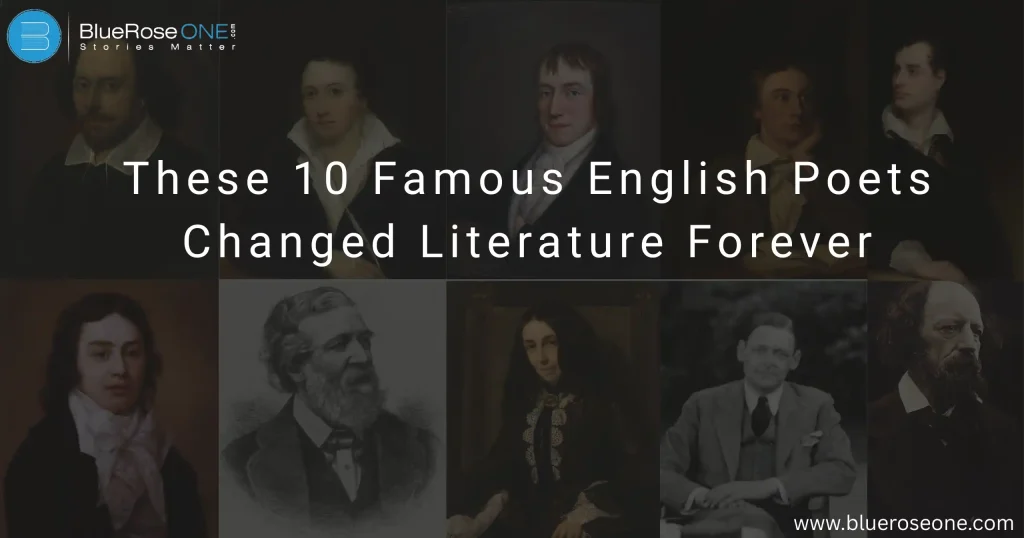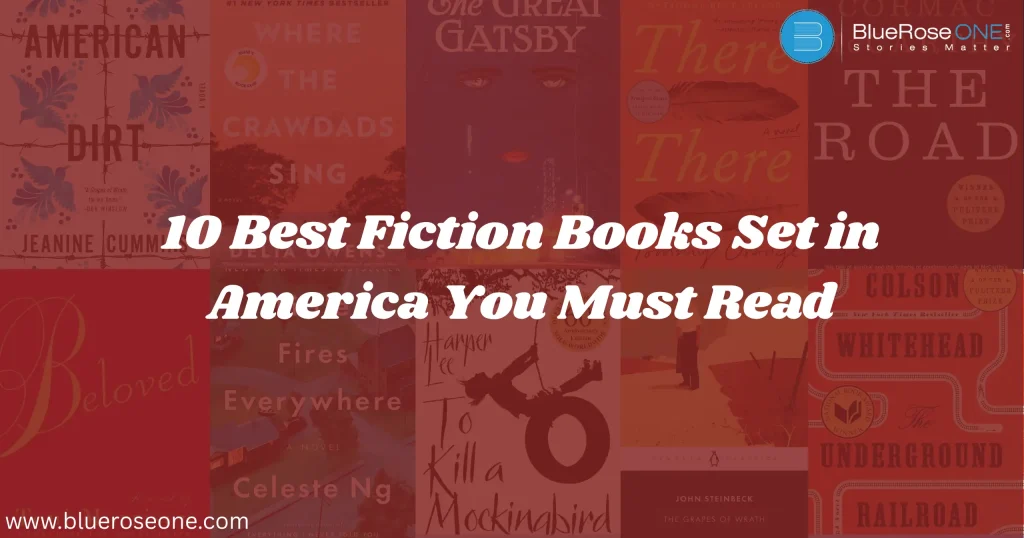
10 Best Fiction Books Set in America You Must Read
Looking to experience the spirit of America without leaving your couch? Fiction set in the U.S. offers a window into its culture, history, and soul. Whether you’re craving a Southern courtroom drama or a haunting tale of the post-apocalypse, American literature has something for every reader. So, grab a comfy seat—here are 10 unforgettable fiction books set in America that you simply must read. Classic Fiction Set in America The Great Gatsby – Best Fiction Books The Great Gatsby by F. Scott Fitzgerald The Great Gatsby by F. Scott Fitzgerald is a literary classic often ranked among the best fiction books ever written. Set in 1920s America, this novel captures the glitz, glamour, and moral decay of the Jazz Age through the enigmatic figure of Jay Gatsby and his obsessive pursuit of the American Dream. With its lush prose, timeless themes of love, ambition, and illusion, The Great Gatsby offers a powerful critique of wealth and social class. Its vivid portrayal of East and West Egg makes it an essential read for anyone exploring iconic American literature and one of the best fiction books set in the U.S. You may also read: Adjectives Begin With S (With Examples & Definitions) To Kill a Mockingbird – Best Fiction Books To Kill a Mockingbird by Harper Lee To Kill a Mockingbird by Harper Lee is largely recognized as one of the best American-set fiction novels, combining powerful storytelling with profound social insight. The story is set in the racially volatile town of Maycomb, Alabama, in the 1930s, and follows little Scout Finch as her father, Atticus, defends a Black man wrongfully accused of assault. Readers are shown the terrible realities of racism, justice, and moral growth via Scout’s naive eyes. Lee’s brilliant storyline and compelling characters transform this Pulitzer Prize-winning novel into a timeless investigation of humanity. Its continuing significance places it among the best fiction books in American literature. The Grapes of Wrath – Best Fiction Books The Grapes of Wrath by John Steinbeck John Steinbeck’s The Grapes of Wrath is a timeless classic and a powerful contender among the best fiction books set in America. This Pulitzer Prize-winning novel, published in 1939, depicts the Joad family’s journey from Dust Bowl-ravaged Oklahoma to the promised land of California during the Great Depression. Through vivid imagery and raw emotion, Steinbeck exposes the harsh realities of poverty, displacement, and inequality while celebrating human resilience and solidarity. With its profound social commentary and unforgettable characters, The Grapes of Wrath remains one of the best fiction books that capture the American spirit and its enduring struggles. You may also read: Top 10 Famous English Poets You Should Know Beloved – Best Fiction Books Beloved by Toni Morrison Toni Morrison’s Beloved stands as a haunting masterpiece and an essential entry among the best fiction books set in America. Set after the Civil War, this Pulitzer Prize-winning novel explores the brutal legacy of slavery through the story of Sethe, a formerly enslaved woman haunted—both literally and figuratively—by her past. Morrison weaves together memory, trauma, and motherhood in a lyrical narrative that blends realism with supernatural elements. Beloved is deeply rooted in American history, making it not just a powerful story of survival and identity, but also a profound commentary on the nation’s darkest chapter, earning its place among America’s literary greats. The Road – Best Fiction Books The Road by Cormac McCarthy Cormac McCarthy’s The Road stands as a haunting masterpiece among the best fiction books set in America. Set in a post-apocalyptic landscape, this Pulitzer Prize-winning novel follows a father and son’s harrowing journey across a desolate, ash-covered America. With minimal dialogue and stark prose, McCarthy paints a bleak yet deeply moving portrait of survival, love, and the enduring human spirit. The emotional depth and stunning imagery make it an unforgettable read that lingers long after the last page. For readers exploring the best fiction books rooted in American settings, The Road is a profound and essential addition to the list. You may also like: 10 Classic Short Stories That Will Blow Your Mind – BlueRoseONE Where the Crawdads Sing – Best Fiction Books Where the Crawdads Sing by Delia Owens Where the Crawdads Sing by Delia Owens is a hauntingly beautiful novel that effortlessly earns its place among the best fiction books set in America. Set in the marshes of North Carolina, the story follows Kya Clark, a mysterious “Marsh Girl” abandoned by her family and shunned by society. Blending a coming-of-age tale with a gripping murder mystery, Owens explores themes of loneliness, resilience, and the healing power of nature. The rich, atmospheric setting and lyrical prose transport readers deep into the wild Southern landscape, making it a standout in American literary fiction and a must-read for fans of emotionally powerful storytelling. Contemporary Best Fiction Books Set in America There There – Best Fiction Books There There by Tommy Orange There There by Tommy Orange is a groundbreaking novel that deserves a spot among the best fiction books set in America. Centered around a diverse cast of Native American characters converging at a powwow in Oakland, California, the novel explores identity, heritage, and the urban Indigenous experience with raw honesty. Orange masterfully weaves multiple narratives, shedding light on generational trauma and cultural survival in modern America. His vivid storytelling and emotionally resonant prose bring visibility to a community often overlooked in literature. There There is not just a powerful read—it’s a vital American story that redefines what it means to belong. You may also read: 100+ Positive Words to Describe Someone – You Won’t Believe #27! The Underground Railroad – Best Fiction Books The Underground Railroad by Colson Whitehead The Underground Railroad, a Pulitzer Prize-winning book by Colson Whitehead, reimagines the historical escape network as a real underground railroad system. The novel, which follows Cora, a young enslaved woman who is trying to find freedom, combines historical fiction with speculative aspects to create a compelling and eerie story. It is one of the best fiction books that addresses…
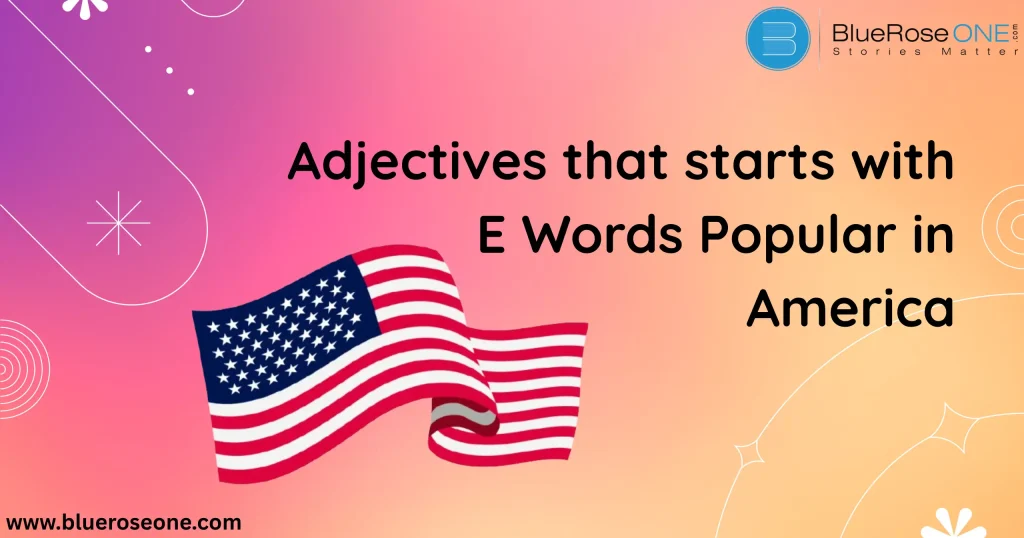
Adjectives that starts with e | Words Popular in Literature
Are you searching for powerful and descriptive adjectives that start with E? Whether you’re writing a story, enhancing your vocabulary, or polishing your communication skills, the English language offers a wide range of expressive words beginning with the letter E. From “eager” to “exuberant,” these adjectives are frequently used in everyday American conversations, literature, and media. In this article, you’ll discover 100 carefully selected E-adjectives, each with an example sentence to help you understand their meaning and usage. You may also like: Adjectives Begin With S (With Examples & Definitions) 100 Adjectives That Start with ‘E’ (Popular in America) Adjective Example Sentence Eager She was eager to start her new job. Early We caught the early flight to New York. Earnest He gave an earnest apology. Earthy I love the earthy scent after the rain. Easy This test is really easy. Eatable The cake didn’t look pretty, but it was eatable. Eccentric His eccentric style stood out in the crowd. Echoing The hall had an echoing sound. Economic The country is facing economic challenges. Edgy That movie had an edgy tone. Educated She’s a well-educated professional. Effervescent Her effervescent personality lit up the room. Efficient This new software is incredibly efficient. Effortless He made the task look effortless. Elaborate They prepared an elaborate dinner. Elastic The waistband is elastic. Elderly The elderly man smiled warmly. Electric The crowd had an electric energy. Elegant She wore an elegant black dress. Eligible You are eligible for the scholarship. Embarrassed He felt embarrassed after tripping. Embellished The story was embellished for effect. Emotional It was an emotional reunion. Empathetic She’s very empathetic toward others. Empty The room felt empty without him. Enchanted The forest looked enchanted in the moonlight. Encouraging Her words were very encouraging. Endearing The puppy had an endearing face. Endless The road seemed endless. Energetic The kids were energetic after the nap. Engaging That was an engaging documentary. Enhanced His performance has greatly enhanced. Enjoyable It was an enjoyable evening. Enlightened She had an enlightened point of view. Enormous They built an enormous mansion. Enraged He was enraged by the decision. Entertaining That was an entertaining show! Enthusiastic She’s very enthusiastic about music. Entire He drank the entire bottle. Envious She felt envious of his success. Equal All citizens should have equal rights. Equitable They reached an equitable agreement. Equivalent The amount is equivalent to five dollars. Erratic His behavior has been erratic lately. Essential Water is essential to life. Established It’s an established brand in America. Esteemed He’s an esteemed professor at Yale. Eternal She believes in eternal love. Ethical It was the ethical thing to do. Euphoric She felt euphoric after winning. Even Keep the table legs even. Eventful It was an eventful year. Everlasting Their friendship is everlasting. Everyday These are my everyday shoes. Evil The villain was pure evil. Exact This is the exact amount we needed. Exaggerated His story seemed exaggerated. Excellent That was an excellent performance. Excitable The dog is very excitable. Excited I’m excited about the weekend. Exciting It was an exciting game. Exclusive This is an exclusive interview. Exhausted He felt exhausted after work. Exotic She collects exotic plants. Expensive That’s an expensive handbag. Experienced She’s an experienced doctor. Expert He’s an expert negotiator. Explosive That was an explosive argument. Expressive Her face is very expressive. Extended They’re going on an extended vacation. Extensive The damage was extensive. External Check the external hard drive. Extra I brought some extra snacks. Extravagant That wedding was extravagant. Extreme They went on an extreme adventure. Exuberant The children were exuberant. Exultant The crowd was exultant after the win. Evolving Her views are constantly evolving. Enigmatic He gave an enigmatic smile. Exposed The wall was exposed to the elements. Exemplary He received an award for exemplary service. Elated She was elated by the news. Expeditious We require an expeditious response. Express She took the express train. Eroded The coastline has eroded. Edgy Her fashion style is edgy. Elasticated The pants are elasticated at the waist. Earthbound The mission was strictly earthbound. Egoistic His egoistic nature caused problems. Equalized The scores were equalized. Egotistical He sounded egotistical in the meeting. Elemental Fire is an elemental force. Emboldened She felt emboldened by the support. Endemic That disease is endemic to the area. Engrossing It’s an engrossing book. Evolving The concept is constantly evolving. Evocative The music was deeply evocative. Excruciating She felt excruciating pain. Expressed His feelings were clearly expressed. Emphatic He was emphatic about his decision. Evaporated The water quickly evaporated. Edifying That was an edifying experience. To Sum up Exploring adjectives that start with E not only enriches your vocabulary but also helps in crafting more expressive and impactful sentences. Whether you’re writing creatively, professionally, or casually, using the right words—like elegant, efficient, or enthusiastic—can make all the difference. These adjectives that start with E are commonly used in American English and can elevate your writing style effortlessly. Keep this list handy to enhance your communication skills and make your language more engaging and effective.
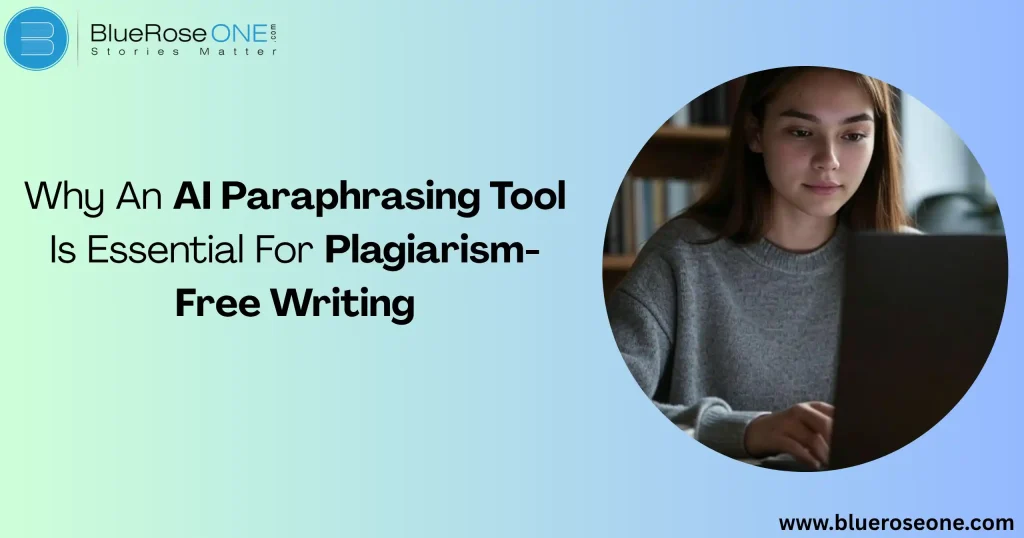
Why An AI Paraphrasing Tool Is Essential For Plagiarism-Free Writing
Plagiarism is a major concern in nearly all types of writing. From academic to professional settings, originality matters more than ever in every domain. That’s why writers, students, and professionals always look for effective solutions for plagiarism-free writing. This is where an AI-powered paraphrasing tool appears on the scene. It is the best automated way to rectify plagiarism issues in nearly all kinds of write-ups. However, the real question is, why does such a tool prove to be the most suitable way out of originality issues? Let’s look at some of the most prominent reasons and also discover some top paraphrasers that can help you stay original in your writing. Why Is An AI Paraphrasing Tool So Important To Avoid Plagiarism? There are various reasons why using an AI paraphrasing tool is necessary to avoid plagiarism in writing. Here are some key ones that make a paraphraser a must-have tool for everyone who aims to produce original content. Introduces New Vocabulary To Your Writing One of the best things an AI paraphrasing tool does is bring in new words. It replaces words that resemble someone else’s with suitable and simpler alternatives. When most of your content’s wording gets changed, it feels like it’s freshly written and seems quite different from the matching source. With significant word modifications and other changes, your writing easily passes plagiarism detection. You may also like: Top 10 Famous English Poets You Should Know Changes Sentence Structures Effectively Changing just a few words isn’t enough to make your writing unique. That’s why an AI rephrasing tool goes beyond word replacements. It dives deeper into your sentences and understands their meanings and context. Then, it says the same thing with a varied structure, making your text sound completely different from others. This way, your sentences convey the same message as before, but don’t feel like they were copied or stolen. Assists In Overcoming Writer’s Block Removing plagiarism from your writing could be challenging, especially if you are not good at paraphrasing. You might face a creative block in which you struggle to decide what and how to change to bring uniqueness to your content. This is why having an AI writing assistant, like a rephrasing tool, is essential. It eliminates the need for extensive brainstorming to make your text unique. Supports Faster Plagiarism Removal Another reason why a rephrasing tool is needed for plagiarism-free writing is its speed. Turning duplicate text into unique content could take sufficient time if done manually. Sometimes, even after a lot of effort in rewriting text, you may create plagiarized text unintentionally. However, with an automated paraphraser, it hardly takes a few seconds for a plagiarized sentence to be unique. You may also read: List of Top 10 Best Free Plagiarism Tools (Checkers) in 2025 Preserves Meanings While Removing Plagiarism When trying to write plagiarism-free content manually, you might fall victim to accidentally changing the original text’s meaning. This way, your content becomes unique but doesn’t say the same thing as the source text. On the other hand, a rephraser can change words and sentence structures while preserving the original meanings. It rewrites the content to no longer look like a copy, but the core message stays the same. Allows Customizing Wording For Uniqueness Sometimes, a part of your writing still remains plagiarized despite making multiple word replacements. This is where an advanced paraphrasing tool with AI capabilities comes in handy. Many such tools let you customize highlighted words in paraphrased versions. For each word, you are provided with different contextually relevant synonyms. With this facility, you can experiment with customizing word choice and testing the originality of your document repeatedly. Improves Understanding Of Paraphrasing An AI-powered paraphraser is not just an instant problem-solving tool. Instead, it also acts as a source of learning, especially for those who are poor at eliminating plagiarism from their writing. Using such a tool regularly lets you slowly learn how to paraphrase text independently. It can help you get familiar with different wording options and sentence formation techniques. When you stay connected with a paraphraser for a long time, you start making your writing unique with effective paraphrasing without any help. You mau also like: 100+ Positive Words to Describe Someone – You Won’t Believe #27! Top AI-Powered Paraphrasers To Remove Plagiarism By now, we hope that using an AI-powered paraphrasing tool is not just a choice; it’s compulsory. However, finding a reliable paraphraser could be tricky for you, as many such tools are available online, and all of them claim to be the best. But out of all of them, the following ones are really worth using for plagiarism-free writing. Paraphrasely.com – Paraphrasing Tool Paraphrasely.com offers a free AI paraphrasing tool that makes plagiarized parts unique. Its huge vocabulary modification capabilities allow it to make significant word replacements in your writing. Moreover, its diverse rephrasing modes ensure that you experiment with different writing styles to eliminate plagiarism completely. Along with that, it also highlights some words in the output to enable you to further customize word choice to bring more uniqueness to your content. Key Features: Uses smart AI algorithms to rephrase text. Completely free to use for everyone. Offers 10 unique paraphrasing modes. Integrated with an efficient plagiarism detector. Shows input and output side-by-side. Paraphraser.io – Paraphrasing Tool Key Features: Offers real-time suggestions on writing. Produces human-like, unique outputs. Brings NLP and ML capabilities into work. Preserves meanings while removing plagiarism. Provides a comprehensive free version Rephrase.info – Paraphrasing Tool Rephrase.info is another AI-driven paraphrasing tool that is worth trying to stay original in writing. Just like any other competent tool, it also facilitates users with advanced rephrasing modes, each with unique functionality. While all of its modes are helpful, the “Creative” and “Smart” are most beneficial to avoid plagiarism. Why? Because both of them have been developed to present the same thing uniquely with a significant touch of creativity and smartness. Key Features: Incredibly faster paraphrased outputs. Maintains clarity while removing plagiarism. Has a simple…
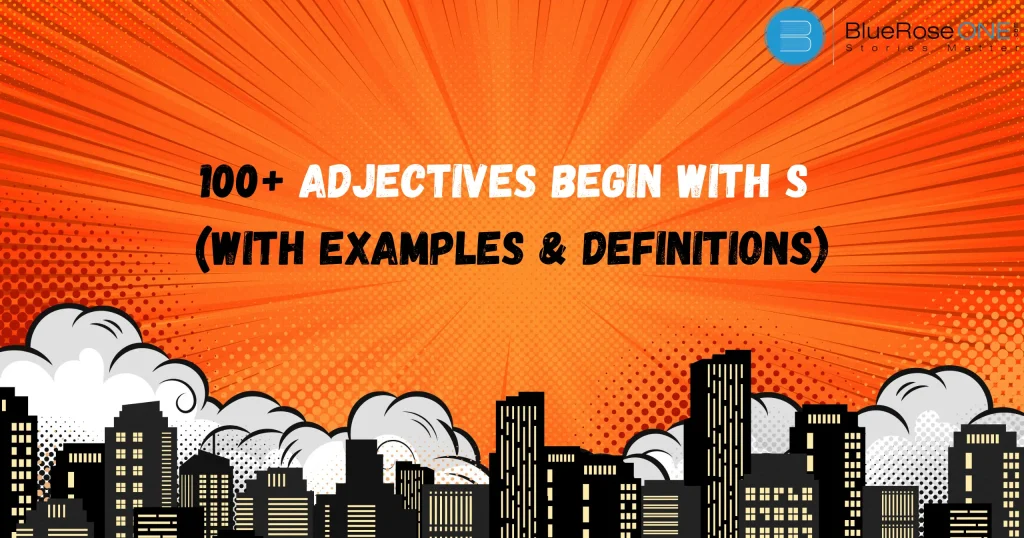
Adjectives Begin With S (With Examples & Definitions)
Are you searching for the perfect adjective that starts with the letter S to add more style, strength, or subtlety to your writing? Look no further! This curated list of 100+ adjectives beginning with S is here to spark your creativity. Whether you’re describing someone’s sincere smile or a suspenseful storyline, each adjective in this guide comes with clear definitions and practical examples to help you choose the right word with confidence. You may also read: Top 50 Famous Dragon Names from Mythology, Books, and Movies 1–20: Common Positive Adjectives Begin With S Sincere – Genuine or heartfelt. She gave a sincere apology. Smart – Intelligent or clever. He’s a smart student who always aces tests. Strong – Physically or emotionally powerful. She is a strong leader in her field. Successful – Achieving goals or prosperity. He built a successful business from scratch. Supportive – Providing encouragement or help. My friends are always supportive of my goals. Stylish – Fashionable and elegant. He looked very stylish in that new suit. Skilled – Good at something. She is a skilled painter. Savvy – Shrewd or well-informed. She is very tech-savvy. Sympathetic – Showing compassion or understanding. The doctor was sympathetic to his concerns. Spectacular – Very impressive or dramatic. The fireworks display was spectacular. Sunny – Cheerful or bright. He has a sunny personality. Sensible – Practical and reasonable. It’s sensible to save money each month. Sweet – Pleasant and kind. She gave me a sweet smile. Safe – Free from harm or danger. This is a safe neighborhood. Skilled – Having expertise or talent. He’s a skilled mechanic. Sensitive – Easily affected emotionally. She’s very sensitive to criticism. Selfless – Caring more for others than yourself. He made a selfless donation. Sharp – Mentally quick or intelligent. She has a sharp mind. Steady – Consistent and reliable. He has a steady income. Sociable – Friendly and outgoing. She’s very sociable at parties. You may also read: 10 Classic Short Stories That Will Blow Your Mind – BlueRoseONE You may also like: Mistborn Series in Order: Start to Finish 21–40: Unique and Descriptive Adjectives Starting With S Sinister – Suggesting evil or harm. The room had a sinister vibe. Soggy – Wet and soft. The bread turned soggy in the rain. Slimy – Slippery and unpleasant. The frog felt slimy. Spiky – Covered in sharp points. The plant has spiky leaves. Skeletal – Resembling a skeleton. The figure looked skeletal. Shadowy – Full of shadows; mysterious. The alley was dark and shadowy. Sticky – Tending to adhere. The floor was sticky with soda. Smoky – Filled with smoke. The kitchen was smoky after cooking. Squishy – Soft and easy to press. The toy is soft and squishy. Scaly – Covered in scales. The dragon had scaly skin. Stormy – Characterized by storms. It was a dark, stormy night. Shallow – Not deep. The water is shallow here. Sizzling – Hot and hissing. The bacon is sizzling in the pan. Silent – Not making noise. The room was completely silent. Snappy – Quick or irritable. She gave a snappy reply. Scarce – In short supply. Food was scarce during the drought. Smudgy – Marked with smears. The mirror looked smudgy. Slippery – Hard to hold or stand on. The floor is slippery after mopping. Speedy – Fast or quick. We need a speedy solution. Snug – Cozy and comfortable. The blanket was warm and snug. You may also like: Top 10 Eavan Boland Poems You Must Read 41–60: Adjectives Begin With S for Personality and Emotions Sarcastic – Using irony to mock. He made a sarcastic comment. Stoic – Showing little emotion. She remained stoic during the crisis. Suspicious – Distrustful or wary. He looked suspicious of the stranger. Shy – Timid or reserved. She’s shy around new people. Scared – Afraid. The child was scared of the dark. Sensitive – Easily affected. He’s sensitive to loud sounds. Stubborn – Unwilling to change. He’s too stubborn to admit it. Selfish – Thinking only of oneself. That was a selfish act. Spontaneous – Acting on impulse. She took a spontaneous trip. Stern – Strict or serious. He gave a stern warning. Scornful – Showing contempt. She gave him a scornful look. Serious – Thoughtful or earnest. He’s serious about his career. Silly – Lacking seriousness. That was a silly mistake. Satisfied – Content or pleased. She was satisfied with the result. Sad – Unhappy. He felt sad after hearing the news. Sarcastic – Mocking in tone. Her tone was overly sarcastic. Sulky – Moody or sullen. He’s been sulky all day. Sweet-natured – Naturally kind. She’s a sweet-natured girl. Sincere – Honest in feeling. His apology was sincere. Sociable – Enjoying social interactions. He’s the most sociable person I know. You may also like: Best Horror Stories to Read Online Alone (If You Dare!) 61–80: Sophisticated and SAT-Level Adjectives Begin With S Sagacious – Wise and insightful. The sagacious professor offered sound advice. Salient – Most important or noticeable. She highlighted the salient points. Sanctimonious – Hypocritically moral. His sanctimonious attitude was annoying. Scintillating – Sparkling or brilliant. Her scintillating conversation dazzled everyone. Scrupulous – Very careful and precise. He is a scrupulous editor. Surly – Bad-tempered and rude. The waiter was surly and impatient. Spartan – Simple and strict. The room had a Spartan décor. Solitary – Alone or single. He enjoys solitary walks. Stellar – Outstanding or excellent. She gave a stellar performance. Subtle – Delicate or not obvious. There’s a subtle difference in tone. Superficial – Shallow or surface-level. His knowledge was superficial. Systematic – Methodical and organized. She used a systematic approach. Strategic – Carefully planned. We need a strategic decision. Succinct – Brief and clear. Her speech was succinct and powerful. Sovereign – Supreme or independent. India is a sovereign nation. Stupendous – Extremely impressive. The view from the hilltop was stupendous. Submissive – Obedient or yielding. He was too submissive in the meeting. Sublime – Of great excellence. The music was…

100+ Positive Words to Describe Someone – You Won’t Believe #27!
Have you ever wanted to compliment someone but got stuck trying to find the perfect word? Whether you’re writing a note, making a toast, or just want to make someone smile, using positive words to describe someone can make a big impact. This list of 100+ uplifting words, paired with real-life examples, will help you express admiration, appreciation, and love more effectively. Why Positive Words Matter The Power of Kind Language Words can change someone’s day or even their life. A kind word at the right moment is like sunlight breaking through clouds. Using thoughtful, positive language encourages people, boosts confidence, and nurtures better relationships. Uplifting Others Builds Stronger Connections Whether you’re giving feedback or writing a tribute, choosing the right words helps people feel seen and valued. Positivity doesn’t just benefit others it makes you more likable and magnetic, too. You may also like: 10 Classic Short Stories That Will Blow Your Mind – BlueRoseONE You may also read: Lottie Brooks Books in Order: A Quick & Fun Guide Categories of Positive Descriptive Words Personality Traits Positive personality traits emphasize an individual’s inner qualities, which influence how they interact with the world. Empathetic, honest, hopeful, and dependable are words used to characterize people who consistently demonstrate desirable behaviors and attitudes. These characteristics not only demonstrate strong character, but also foster trust and connection in personal and professional relationships. Using such words can effectively convey respect and admiration for someone’s character. These describe the essence of someone’s character who they are at their core. Genuine Honest Loyal Passionate Optimistic Work Ethic and Professionalism Perfect for colleagues, recommendations, and resumes. Diligent Reliable Efficient Goal-oriented Innovative Creativity and Intelligence Highlight someone’s mental strengths and imaginative spark. Visionary Clever Resourceful Analytical Bright Kindness and Empathy Emphasize warmth and emotional intelligence. Compassionate Caring Thoughtful Supportive Generous Humor and Charisma Showcase someone’s ability to light up a room. Witty Charming Fun-loving Engaging Entertaining Leadership and Influence Words that define people who inspire and guide others. Influential Courageous Empowering Respectable Bold You may also read: Top 50 Famous Dragon Names from Mythology, Books, and Movies You may also like: All Colleen Hoover Books in Order Listed by Series & Date 100+ Positive Words to Describe Someone 1–20 Positive Personality Traits Authentic Brave Cheerful Confident Curious Determined Enthusiastic Friendly Gentle Honest Humble Imaginative Joyful Kind-hearted Loyal Noble Patient Persistent Responsible Sincere 21–40 Positive Work-Related Words Ambitious Committed Competent Consistent Cooperative Dependable Driven Focused Hardworking Independent Leader Methodical Motivated Organized Practical Proactive Professional Resilient Skilled Strategic You may also like: Dog Man Books in Order: Books Listed Chronologically You may also read: The Selection Series in Order: Full Book Guide 41–60 Positive Emotional Qualities Accepting Affectionate Attentive Balanced Caring Considerate Empathetic Forgiving Gentle Grateful Hopeful Loving Mindful Nurturing Peaceful Reassuring Respectful Selfless Sensitive Supportive 61–80 Positive Social Attributes Approachable Articulate Captivating Charismatic Collaborative Courteous Delightful Diplomatic Engaging Enthralling Fair-minded Flexible Funny Gracious Helpful Kind Likable Open-minded Pleasant Polite You may also read: 10 Classic Short Stories That Will Blow Your Mind – BlueRoseONE You may also like: The Housemaid Series in Order: A Complete Reading Guide 81–100 Positive Inspirational Traits Adaptable Adventurous Ambitious Courageous Creative Dependable Disciplined Dynamic Eloquent Empowering Fearless Grounded Heroic Idealistic Inspirational Motivating Passionate Reliable Visionary Wise Bonus Words That Stand Out Zesty Magnetic Trailblazing Spirited Phenomenal Real-Life Examples of How to Use These Words Complimenting a Friend – “You’ve always been so supportive and uplifting. I can count on you no matter what.” Writing a Job Recommendation – “Priya is an innovative and reliable team player who brings a strategic mindset to every project.” Describing Someone in a Dating Profile – “I’m looking for someone who’s genuine, witty, and compassionate like me!” Toasts and Speeches – “Let’s raise a glass to Raj, whose courage, integrity, and leadership inspire us all.” Daily Interactions – “You’re always so thoughtful. I appreciate how you remember the little things.” You may also like: Sage Archetype: Meaning and Tips for Writers How to Choose the Right Word Match the Word to the Situation When choosing a positive word to describe someone, context matters. A word like “brave” suits someone who faces danger, while “generous” fits someone who gives freely. Matching the word to the situation ensures your compliment feels genuine and accurate. Misusing words can dilute their impact, so always consider the setting, the person’s actions, and how the word will be received before using it. Avoid Overused or Vague Compliments When choosing the right word, avoid overused or vague compliments like “nice” or “good,” as they lack specificity and impact. These words don’t reveal what truly makes someone special. Instead, opt for precise terms like “empathetic,” “diligent,” or “charismatic” to clearly express genuine admiration. Thoughtful word choices show deeper appreciation and make your compliments more memorable and meaningful in real-life conversations. You may also like: How to Read Jack Carr Books in Order: Ultimate Guide Final Thought Words are free, but their impact is priceless. Whether you want to cheer up a friend, describe a colleague, or charm someone on a first date, the right word can make someone feel seen and special. So next time you find yourself reaching for “nice,” go deeper and use one of these 100+ powerful words to describe someone instead. Frequently Asked Questions Q1: What are the most powerful positive words? Words like inspirational, genuine, empowering, and compassionate tend to have a strong emotional impact. Q2: How do I describe someone positively without sounding fake? Be specific. Talk about something they’ve done that shows the trait, not just the trait itself. Q3: Can I use these words in professional writing? Absolutely! Words like reliable, strategic, and innovative are perfect for resumes and recommendations. Q4: What’s the best way to compliment someone? Be sincere and personal. Mention a specific action or behavior, and how it made a difference. Q5: Are there cultural differences in positive descriptors? Yes, values vary by culture. For example, humility is prized in some cultures, while assertiveness is seen as a virtue in others.
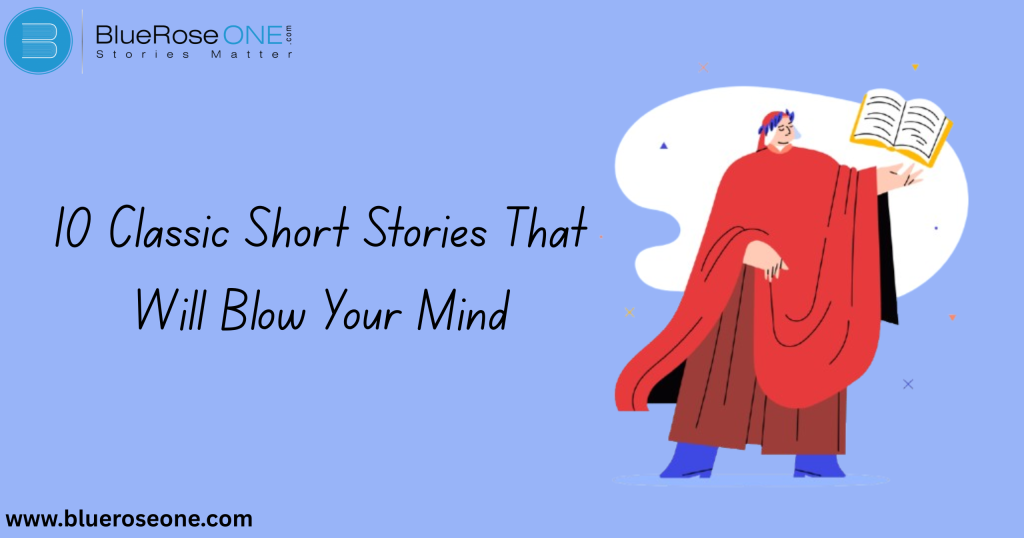
10 Classic Short Stories That Will Blow Your Mind – BlueRoseONE
Classic Short stories pack a punch. In just a few pages, they can unravel your expectations, challenge your morals, or leave you sitting in stunned silence. But what really makes a short story mind-blowing? It’s the twist. The layers. The way you’re forced to think hard. Some stories make you gasp. Some make you cry. Others? They make you question everything. Ready to dive into ten unforgettable classics? Let’s get into it. Here’s the Top 10 Best Classic Short Stories to Blow Your Mind The Lottery – Classic Short Stories 1. “The Lottery” by Shirley Jackson Shirley Jackson’s “The Lottery” is a disturbing look at blind tradition and societal brutality. Set in an apparently typical village, the story unfolds with uncanny normalcy until its horrific end, in which a random villager is stoned to death as part of an annual tradition. Published in 1948, this short story provoked controversy and acclaim for its condemnation of conformity, cementing its place as a timeless classic that continues to elicit discussion and debate. You may also like: Top 50 Famous Dragon Names from Mythology, Books, and Movies The Tell-Tale Heart- Classic Short Stories 2. “The Tell-Tale Heart” by Edgar Allan Poe Edgar Allan Poe’s “The Tell-Tale Heart” is a haunting examination of guilt and lunacy. The story, told by an unknown narrator who insists on their sanity, describes the planned murder of an elderly man motivated by a fixation with his “vulture eye.” As the narrator becomes increasingly paranoid, they hear the deceased man’s heartbeat and eventually confess to the crime. This psychological thriller is still a masterclass in suspense and horror. An Occurence at Owl Creek Bridge – Classic Short Stories 3. “An Occurrence at Owl Creek Bridge” by Ambrose Bierce Ambrose Bierce’s mind-bending short story from the Civil War, “An Occurrence at Owl Creek Bridge,” deftly blurs the boundaries between fact and delusion. It centers on Peyton Farquhar, a Confederate sympathizer who is about to be put to death. Bierce immerses readers in a realistic escape scene as the noose tightens, only to discover a startling turn of events. This story, which is well-known for its unexpected conclusion and psychological nuance, is a potent illustration of literary genius and narrative deception. You may also like: Top 10 Eavan Boland Poems You Must Read The Yellow Wallpaper- Classic Short Stories 4. “The Yellow Wallpaper” by Charlotte Perkins Gilman The Yellow Wallpaper by Charlotte Perkins Gilman is a haunting psychological short tale that delves into subjects such as mental illness, gender roles, and repression. The story is told through the journal entries of a woman suffering from postpartum depression, and it depicts her gradual spiral into lunacy as she gets obsessed with the wallpaper in her room. This terrifying narrative criticizes 19th-century medical treatment of women and remains a powerful feminist classic that is still relevant today. The Most Dangerous Games- Classic Short Stories 5. “The Most Dangerous Game” by Richard Connell “The Most Dangerous Game” by Richard Connell is a riveting story about survival and human psychology. It was first published in 1924 and follows Rainsford, a skillful hunter, as he becomes the prey of a crazed aristocrat named General Zaroff on a lonely island. The novel delves into topics of morality, brutality, and the narrow line between hunter and pursued. Its thrilling plot and inventive twist make it one of the most memorable short stories ever written. You may also read: Top 15 Best Post Apocalyptic Books You Must Read in [2025 Update] 6. “Harrison Bergeron” by Kurt Vonnegut Kurt Vonnegut’s “Harrison Bergeron” is a dramatic dystopian short story set in a future when forced equality has robbed humanity of its individuality and excellence. Vonnegut’s story of a bright adolescent revolting against repressive government control exposes the consequences of excessive egalitarianism and loss of independence. The story’s dark satire, captivating action, and forceful message prompt readers to consider the true cost of forced conformity in society. A Good Man is Hard to Find – Classic Short Stories 7. “A Good Man is Hard to Find” by Flannery O’Connor Through the terrifying story of a family road trip gone wrong, Flannery O’Connor’s Southern Gothic masterpiece “A Good Man is Hard to Find” examines issues of morality, grace, and redemption. O’Connor creates an unsettling but thought-provoking story with dark humor and scathing irony that ends with a startling run-in with a serial killer. Readers are deeply impacted by the story’s potent message on spiritual awakening and hypocrisy. You may also like: Best Horror Stories to Read Online Alone (If You Dare!) The Money’s Paw- Classic Short Stories 8. “The Monkey’s Paw” by W. W. Jacobs W. W. Jacobs’ “The Monkey’s Paw” is a chilling tale of fate and consequences. Centered around a magical talisman that grants three wishes, the story explores how tampering with destiny leads to tragic outcomes. The White family’s desire for wealth turns into a nightmare, revealing the dark side of wish fulfillment. With its suspenseful plot and eerie atmosphere, this classic remains a masterclass in horror and moral storytelling. The Ones Who Walk Away from Omelas- Classic Short Stories 9. “The Ones Who Walk Away from Omelas” by Ursula K. Le Guin Ursula K. Le Guin’s “The Ones Who Walk Away From Omelas” is a sad philosophical short tale that asks readers to consider the moral cost of communal contentment. Set in a utopian society, the novel discloses a cruel secret: Omelas’ delight is dependent on the ongoing agony of one innocent child. Through this disquieting premise, Le Guin delves into topics of ethics, complicity, and individual conscience, leaving readers extremely troubled and reflective. You may also like: Pulitzer Prize Fiction Winners by Year: A Complete List The Necklace- Classic Short Stories 10. “The Necklace” by Guy de Maupassant “The Necklace” by Guy de Maupassant is a magnificent story of vanity, pride, and irony. It is set in nineteenth-century Paris and follows Madame Loisel, a woman who steals a supposedly valuable jewelry to attend a high-society event. When she loses it, she and…
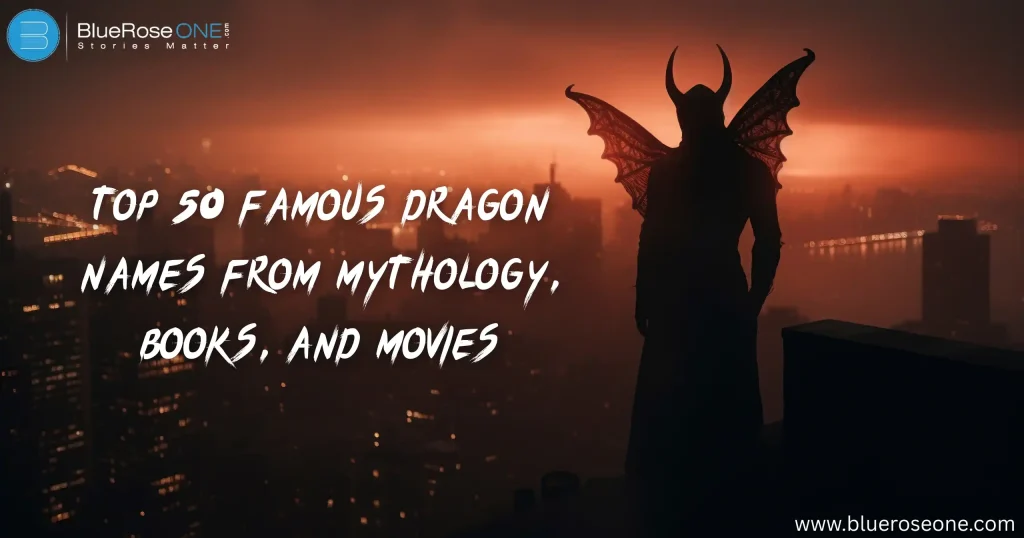
Top 50 Famous Dragon Names from Mythology, Books, and Movies
Dragons are legendary. These mystical beasts have soared through mythologies, haunted fantasy worlds, and captivated film audiences for generations. Whether they’re wise protectors, greedy hoarders, or apocalyptic monsters, one thing is clear dragon names leave a lasting mark. From Smaug to Shenron, each dragon’s name carries meaning, myth, and magic. Let’s dive into 50 of the most famous dragon names from mythology, books, and pop culture, and discover what makes each one unforgettable. Legendary Famous Dragons Names from Mythology European Mythology Fafnir – Norse Greed-Turned-Dragon Tale: Once a dwarf corrupted by greed, Fafnir transformed into a dragon to guard his cursed treasure. His tale echoes in Wagner’s operas and Tolkien’s fiction. Zmey Gorynych – Russia’s Three-Headed Fire-Breather: This Slavic dragon is a fire-breathing villain with three heads, defeated by heroic knights in Russian folklore. He’s a true beast of battle and myth. Ladon – Greek Dragon of the Golden Apples: Guarding the Garden of the Hesperides, Ladon’s many heads never slept. He was eventually slain by Hercules as part of his labors. You may also like: Top 10 Types of Novels That Dominate Bestseller Lists Asian Mythology Ryujin – Japanese Sea Dragon God: Ryujin rules the ocean and controls the tides with magical jewels. He symbolizes the power of the sea in Japanese Shinto beliefs. Long (Lung) – Chinese Celestial Dragon: Unlike Western dragons, Long is a wise, benevolent creature associated with rain, power, and imperial authority. Naga – Serpent-like Deities: In Hindu and Buddhist traditions, Nagas are semi-divine serpent beings that often guard treasures and sacred places. You may also like: Top 10 Eavan Boland Poems You Must Read Other Mythology Quetzalcoatl – Feathered Serpent of Aztec Lore: Part dragon, part bird, this deity was a god of wind and wisdom. His name literally means “feathered serpent.” Illuyanka – Hittite Dragon of Storms: An ancient tale pits the storm god Tarhunt against the serpent dragon Illuyanka, symbolizing cosmic order versus chaos. Vritra – Vedic Dragon Slain by Indra: Vritra held back the waters until Indra, king of the gods, slew him and released the rivers to the world. Iconic Dragons from Books – Famous Dragon Books J.R.R. Tolkien’s World Smaug – The Hoarding Dragon: This golden-scaled dragon lays waste to Erebor and hoards gold. His arrogance and intelligence make him unforgettable. Glaurung – The First Fire Drake: Without wings but full of cunning, Glaurung spreads destruction and despair in The Silmarillion. Ancalagon the Black – The Mightiest Dragon: Sauron’s deadliest weapon in the First Age, Ancalagon, was so massive he destroyed mountains as he fell. You may also like: Best Horror Stories to Read Online Alone (If You Dare!) You may also like: 150+ Vivid Verbs to Supercharge Your Writing Every Writer Should Use Modern Fantasy Saphira – Bonded with Eragon: Elegant, intelligent, and loyal, Saphira is not just a dragon but a cherished character in Paolini’s Inheritance Cycle. Temeraire – Dragon of the Skies: Naomi Novik’s series blends history and fantasy with Temeraire, a Chinese Celestial Dragon fighting alongside the British. Abraxan – Magical Mount in Harry Potter:A breed of enormous winged horses crossed with dragons, Abraxans pull the Beauxbatons carriage in Goblet of Fire. Famous Dragon Names from Movies and Series Westeros – Game of Thrones Drogon – Named After Khal Drogo: The largest and fiercest of Daenerys’s dragons. He’s a symbol of her power and destiny. Rhaegal – Green and Graceful: Named after Daenerys’s brother, Rhaegal adds balance and heart to the trio. Viserion – Ice-Breathing Wight Dragon: Resurrected by the Night King, Viserion turns from fire to ice, creating one of the show’s biggest twists. You may also read: Pulitzer Prize Fiction Winners by Year: A Complete List Animated Films Toothless – The Night Fury: Toothless won hearts with his playful demeanor and deadly precision. His bond with Hiccup redefined dragon friendships. Stormfly – Fast and Fierce: Astrid’s dragon in How to Train Your Dragon is both deadly and elegant. Sisu – Spirit of Water: In Raya and the Last Dragon, Sisu represents trust, magic, and joy with her flowing form and sparkling scales. Classic and Cult Films – Famous Dragon Names Falkor – The Luckdragon: Falkor isn’t your typical dragon. He’s friendly, fluffy, and full of luck flying through dreams in The NeverEnding Story. Draco – Voice of Sean Connery: From Dragonheart, Draco is noble and sacrifices himself to bring peace to a true cinematic hero. Maleficent (Dragon Form): When she transforms into a dragon in Sleeping Beauty, Maleficent becomes the embodiment of dark magic. You may also read: Top 15 Best Post Apocalyptic Books You Must Read in [2025 Update] You may also like: The Housemaid Series in Order: A Complete Reading Guide Video Game Famous Dragons Alduin – The World-Eater: This apocalyptic dragon from Skyrim threatens the end of the world. His name strikes terror into the hearts of Dragonborn. Deathwing – Cataclysm Incarnate: The destroyer in World of Warcraft, Deathwing is pure chaos, tearing apart Azeroth in his madness. Rathalos – King of the Skies: A classic beast in Monster Hunter, Rathalos is ferocious, agile, and awe-inspiring in battle. Famous Dragon Names in Comics and Anime Shenron – Eternal Dragon: Collect the Dragon Balls, and Shenron will grant your wish. He’s a towering presence in the Dragon Ball universe. Igneel – Fire Dragon King: Natsu’s adoptive father and a majestic presence in Fairy Tail, Igneel embodies flame and fatherly strength. Acnologia – The Black Dragon: Once a human, Acnologia became one of the most terrifying dragons, threatening to end all dragons and slayers alike. You may also read: What Is Demonology? Origins, Beliefs & Modern Interpretation Dragons from Tabletop and Roleplaying Games Tiamat – Five-Headed Dragon Goddess: Each head represents a different chromatic color and element. Tiamat is feared across the multiverse. Bahamut – The Platinum Dragon: Symbol of justice and wisdom, Bahamut is the ultimate good-aligned dragon in Dungeons & Dragons. Klauth – Old, Rich, and Evil: This ancient red dragon hoards magic and money, ruling with cruelty and cunning. Top 10 Coolest-Sounding Dragon Names Syrax, Caraxes,…
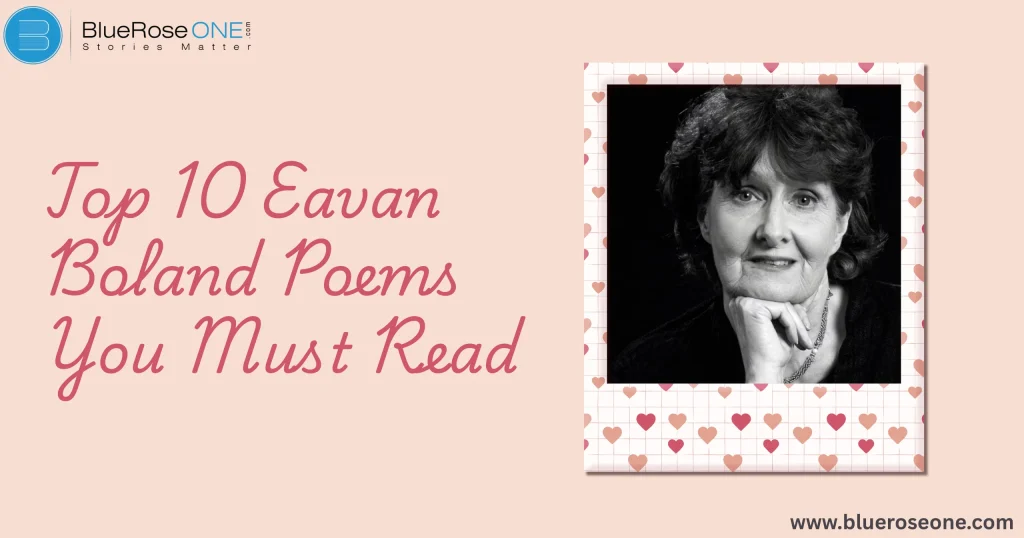
Top 10 Eavan Boland Poems You Must Read
If you’ve ever found yourself caught between history and home, myth and motherhood, or power and poetry, you need to read Eavan Boland. A revolutionary Irish poet, Boland gave voice to women’s experiences in a literary landscape long dominated by male perspectives. Her poems are haunting, lyrical, and deeply intimate like whispers from the past that echo in the present. So, where do you start? Right here with these ten eaven boland must-read poems. 1. “The Pomegranate” In “The Pomegranate,” Boland resurrects the ancient Greek narrative of Persephone and Demeter. However, the story here is about more than just gods and underworlds; it is about mothers and daughters, love, and letting go. This poem is real and relatable. It portrays the agony of watching a child grow up and forge her own path even if it entails suffering. Boland demonstrates how ancient legends still exist within us. 2. “Quarantine” Quarantine is one of Eavan Boland’s most dramatic and sad poems, demonstrating her great interest in Irish history and human suffering. Set during the Irish Famine, the poem relates the terrible story of a couple who die in each other’s arms after being turned down for relief. Boland’s austere, restrained language depicts the devastation of poverty as well as love’s abiding existence even in death. “Quarantine” is a monument to humanity, remembrance, and the quiet tragedies of the downtrodden, ranking among her most unforgettable works. You may also read: Top 15 Best Post Apocalyptic Books You Must Read in [2025 Update] 3. “This Moment” Eavan Boland’s poetry This Moment is peaceful and evocative, capturing the tranquility and expectation of a summer evening in a suburban neighborhood. Boland infuses a commonplace moment of a mother watching her child run outside with a sense of awe and transformation, using vivid images and simple words. The poem delves into issues of motherhood, time, and transitory beauty, demonstrating Boland’s talent for lifting domestic life into lyrical poetry. This Moment stands out among her works due to its simplicity and emotional depth. 4. The Was Horse The War Horse is one of Eavan Boland’s most intriguing early poems, which explores the connection of personal life and political violence in Ireland. Boland uses the image of a stray horse straying into a suburban area to discreetly explore issues of nationalism, memory, and the illusion of safety. The horse’s gentle destruction of gardens and fences becomes a metaphor for Ireland’s past conflicts, demonstrating how violence can infiltrate even the most mundane areas. With strong imagery and restrained passion, the poem exemplifies Boland’s signature style of combining personal experience with national identity. You may also like: Pulitzer Prize Fiction Winners by Year: A Complete List 5. The Shadow Doll The Shadow Doll is one of Eavan Boland’s most moving depictions of gender, tradition, and restriction. The poem, centered on a preserved bridal trousseau doll, reflects on women’s traditionally passive role in marriage. Boland’s doll serves as a frightening metaphor for suppressed femininity and the cultural demands placed on brides. With precise language and beautiful imagery, she criticizes the historical erasure of women’s voices, creating The Shadow Doll, a strong statement on gender roles and independence. 6. “Atlantis – A Lost Sonnet” Eavan Boland’s Atlantis – A Lost Sonnet is a moving meditation on memory, grief, and the fragile nature of language. In this poem, Boland reimagines the fabled Atlantis as a metaphor for a lost past, something beautiful but unattainable. The sonnet explores the conflict between what is remembered and what is lost, demonstrating her command of form and emotion. Boland writes with lyrical precision about the fading of personal and cultural history, challenging readers to consider the cost of forgetting and the ability of poetry to maintain. It’s a somber and intriguing piece that explores her distinctive themes. You may also like: Where Was the First Printing Press Created? | BlueRoseOne 7. “Anorexic” Eavan Boland examines the harmful connection between a woman’s body and conventional standards of attractiveness in Anorexic. The poem transforms the body into a battlefield of identity and control by using vivid, visceral imagery to portray the speaker’s internal conflict and physical self-denial. Boland criticizes how women may develop hatred against their own bodies as a result of patriarchal influences. Anorexic is a haunting and potent poetry that is particularly honest and emotionally packed. 8. “Night Feed” Night Feed by Eavan Boland is a quiet yet powerful portrayal of motherhood, capturing the intimate bond between a mother and her infant during a nocturnal feeding. Written in simple, lyrical language, the poem reflects the exhaustion, tenderness, and awe of new motherhood. Boland elevates a domestic moment into a profound meditation on life, identity, and womanhood. “Night Feed” exemplifies her strength in blending the personal with the poetic, making everyday experiences deeply resonant and universal. You may also like: What Is Demonology? Origins, Beliefs & Modern Interpretation 9. “Love” Eavan Boland’s poetry Love is a melancholy reflection on memory, grief, and the strength of profound emotional relationships. Set against the backdrop of a previous sickness, the poem recalls a period of vulnerability and closeness between the speaker and her spouse. With legendary connotations that reference Orpheus and Eurydice, Boland investigates how love endures despite suffering, even as memory fades. Love, which is rich in lyrical imagery and emotional depth, exemplifies Boland’s ability to merge the personal and the universal, making it one of her most powerful and memorable works. 10. “Object Lessons” Eavan Boland’s poem Object Lessons is a remarkable exploration of the junction between human memory and larger historical narratives. Boland explores early discovery moments through vivid imagery and quiet meditation, focusing on how language and objects convey hidden meanings. The poem expertly blends the domestic with the mythic, demonstrating how everyday objects may serve as strong metaphors for identity, gender, and cultural heritage. “Object Lessons” is required reading due to its complex storytelling and emotional depth. You may also like: The Mighty Red by Louise Erdrich – Book Review Conclusion Eavan Boland wasn’t just a poet. She was a…
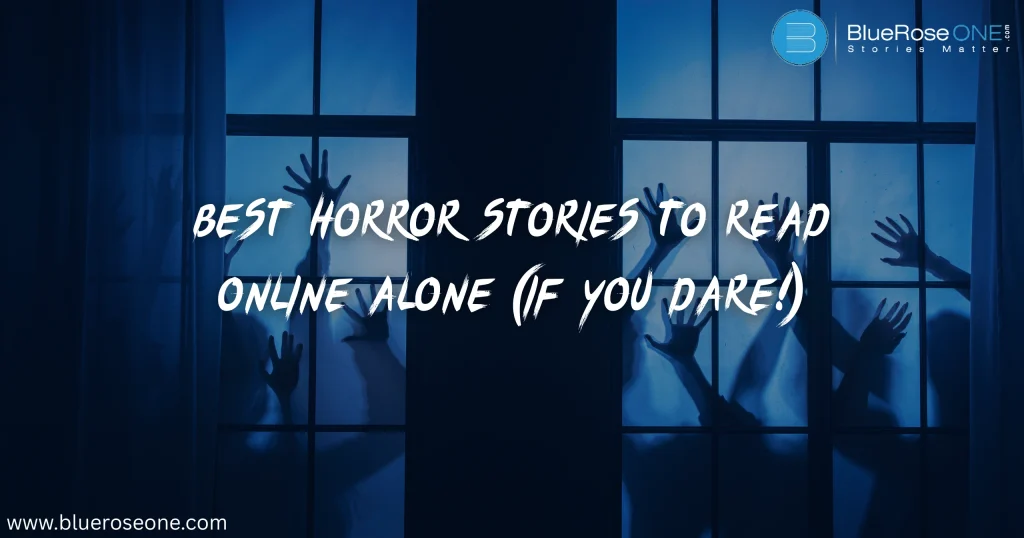
Terrifying Horror Stories to Read Online Alone (If You Dare!)
Reading horror stories alone is like willingly stepping into a haunted house. The silence around you, the shadows in the corners, and the quiet creaks you usually ignore suddenly become terrifying. It’s not just a story anymore it feels like it’s happening to you. Let’s be honest: horror hits way harder when you’re alone. Your imagination becomes your worst enemy. A tapping sound? Probably the monster. That weird shadow? Definitely a ghost. Reading solo amplifies everything. Unlike movies or podcasts, reading allows you to control the pace. You fill in the blanks. You build the scene. And when you’re alone, your mind becomes the playground of your deepest fears. Best Horror Stories to Read Online (Curated List) “The Russian Sleep Experiment” One of the most chilling creepypastas to circulate online, The Russian Sleep Experiment tells the story of a post-World War II Soviet experiment involving political prisoners subjected to an insomnia-inducing gas. Over several days, the subjects descend into madness, mutilation, and eventually cannibalism. Presented as a classified report, the story’s pseudoscientific tone and grotesque detail amplify its believability, making it a staple of internet horror lore. Although entirely fictional, its disturbing imagery and slow psychological unraveling have earned it a cult following among horror fans. It’s the perfect read for those who enjoy psychological and body horror with a dose of conspiracy. You may also like: 150+ Vivid Verbs to Supercharge Your Writing Every Writer Should Use “My Dead Girlfriend Keeps Messaging Me on Facebook” “My Dead Girlfriend Keeps Messaging Me on Facebook” is a chilling creepypasta-style horror story that gained widespread popularity on Reddit’s r/NoSleep forum.Written by user NateSW, the tale follows a grieving boyfriend who begins receiving Facebook messages from his deceased girlfriend, Emily. As the messages grow increasingly disturbing recounting events only she could know the narrator is drawn into a terrifying mystery that blurs the line between grief and supernatural horror.The story’s slow build, authentic tone, and eerie digital hauntings make it a standout in modern internet horror, particularly effective for readers who enjoy psychological thrillers with a technological twist. You may also like: Nosferatu: The History of the First Vampire in Film The Smiling Man The Smiling Man is a terrifying horror story that has garnered traction on Reddit’s r/NoSleep community. Blue_tidal wrote about a terrifying late-night encounter with a strange, smirking man on an empty street. The story’s ominous atmosphere and genuine first-person narrative heighten the anxiety, making readers feel as if they are right alongside the protagonist. The slow-building dread and subtle otherworldly undertones make The Smiling Man a must-read for aficionados of psychological and urban horror. “Penpal” by Dathan Auerbach Penpal, written by Dathan Auerbach and originally uploaded on Reddit’s r/nosleep, is a terrifying psychological horror story told through a succession of eerie childhood memories. It is told in first person and follows a guy as he attempts to put together unexplained occurrences from his history, beginning with an apparently innocent school assignment. As the story progresses, a horrible truth emerges, instilling an overwhelming sense of dread. Its slow-burning suspense and highly intimate tone create a remarkable online horror experience. You may also read: Mindset Shift by Sharani Ponguru | Book Review You may also like: 10 Best Fiction Books Set in America You Must Read Autopilot “Autopilot” is a chilling short horror story that taps into the terror of routine turned deadly. Often shared on forums like Reddit’s r/nosleep, the tale follows a parent who unknowingly slips into autopilot mode during their morning routine only to realize a tragic mistake far too late. Its quiet, psychological horror lies in its relatability, making readers question their own daily habits. The twist ending delivers a gut-punch that lingers long after the story ends. Ted the Caver Ted the Caver, one of the first and most recognizable examples of creepypasta, is a terrifying web-based horror narrative told through blog-style entries. The story follows Ted and his companion as they explore a hidden tunnel system, which quickly reveals bizarre symbols, spooky sounds, and progressively terrible encounters. Its slow-burn tension, realistic tone, and use of early internet formatting set it apart in online horror fiction ideal for people who prefer psychological dread to jump scares. Anansi’s Goatman Story Anansi’s Goatman Story is a scary piece of internet folklore that has attracted readers on sites such as Reddit’s r/nosleep. The story, told in a casual, campfire-style tone, depicts a group of teens on a camping vacation in Alabama who come across a shapeshifting entity known as the Goatman. The suspense grows quietly as unusual incidents point to something malevolent in their midst. Its realistic language, spooky ambiance, and urban legend origins make it one of the most unsettling horror stories available online. You may also like: Top 15 Short Novels to Read in a Weekend You may also like: The Housemaid Series in Order: A Complete Reading Guide Underrated Gems You Shouldn’t Miss The Showers “The Showers” by Dylan Sindelar is a chilling internet horror story that unfolds through a teacher’s eerie recollection of a mysterious, off-limits location from his childhood. As he revisits the abandoned site, the story masterfully builds tension through atmospheric writing and creeping dread. Originally published on Creepypasta, The Showers is a slow-burn tale that pays off with a disturbing climax, making it a must-read for fans of psychological horror and urban legends. “Psychosis” by Matt Dymerski “Psychosis” by Matt Dymerski is a psychological horror masterpiece that has earned cult status among creepypasta lovers. This short story follows the horrific slide of a man afflicted by solitude and paranoia, as reality begins to disintegrate in disturbing ways. As he becomes more certain that something horrific waits just beyond his digital and physical worlds, readers are drawn into a terrifying spiral of fear. The slow-burn storyline and realistic tone of Psychosis make it particularly unnerving, leaving readers wondering where the line between sanity and delusion lies. It’s a terrifying book that’s best enjoyed in silence with the lights turned off. You may also like: Top 10 Types of Novels…

